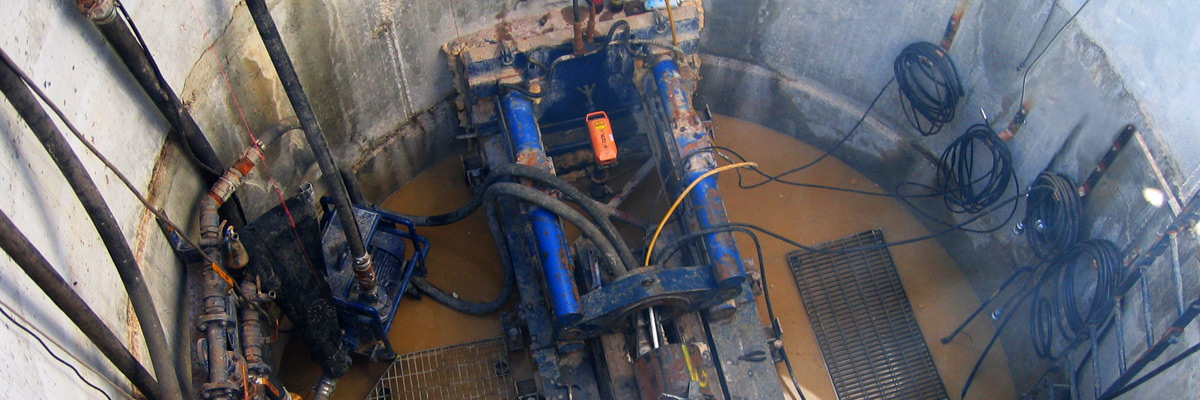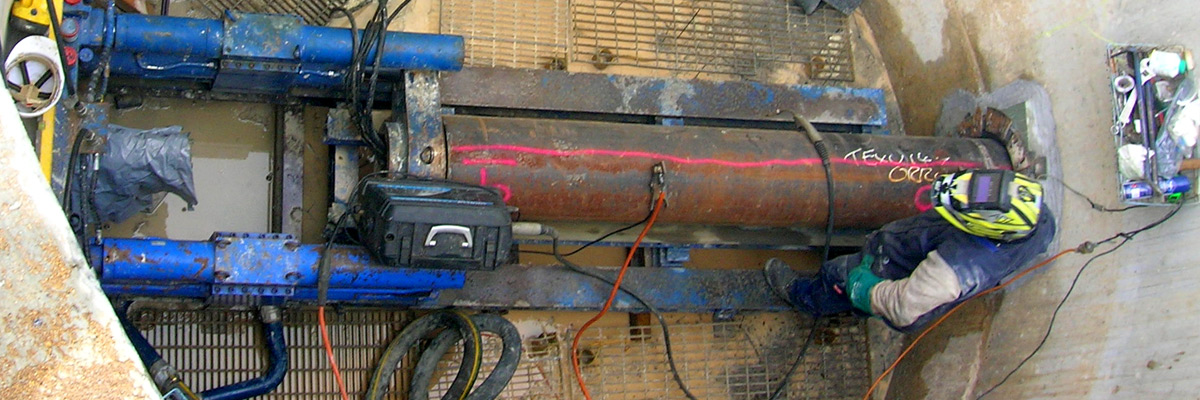Lake Coogee Estate Stages 1 & 2 Sewer Microtunneling
This contract involved the construction of 1,701m of DN150 and DN225 PVC gravity sewer mains. This would connect the Lake Coogee Estate, on Fawcett Road, to the sewer network located on West Churchill Road, Munster.
-
Client:
Citibond
-
Location:
West Churchill and Fawcett Roads, Munster
-
Construction Period:
Jul 08 – Apr 09
-
Key Elements:
- Microtunneling
- Tunneling through limestone
- Caisson construction
- Sewer installation
- Traffic management
- Community liaison
Project overview
Due to the close proximity of wetlands, there were restrictions on dewatering due to the groundwater being ‘too clean’ to mix with the lake water and associated marine life. Over half of the sewer was in water charged ground. We offered our own trenchless technology solutions to install the sewer. Given the cavernous limestone ground conditions, our Rockman TRW400 microtunneling machine was used with DN400 steel casing and low heat grout to fill the annulus between the PVC pipe and steel casing. The pipework was installed to line and grade on spider brackets.
DM Civil carried out extensive geotechnical and environmental remediation of the area. We also completed stages 1 and 2 of the Lake Coogee Estate, including full reconstruction of Fawcett Road.
By using trenchless techniques, our client was able to meet strict environmental conditions imposed on the area and therefore gain approvals for their development.
Significant achievements and benefits
The cavernous limestone ground conditions and water charged ground required specialised trenchless technology equipment. We used our microtunneling machines with Rockman head to ensure each drill shot would be to the required accuracy specified by the client.
Trenchless technology drastically reduced the amount of dewatering required, which in turn allowed for Department of Water clearance for the project to proceed.
The sewer alignment was in the middle of Fawcett Road, with homes on both sides of the road. If this project was constructed using open cut excavation, deep trenching up to a depth of 11m would have been necessary. However, the use of microtunneling eliminated any residential access issues along the route.
The microtunneled pipe was launched inside 4.6m diameter sealed, reinforced concrete caisson thrust and receival pits, up to 11m deep. The sacrificial caissons were constructed insitu so that access chambers could be constructed inside once microtunneling was complete. This method mitigated the risk of settlement around the caisson.
In total, 515m of DN150 and 294m of DN225 sewer was constructed with microtunneling. This was constructed in cavernous limestone ground conditions with the majority below the water table. By using the sealed concrete caisson thrust pits, the dewatering requirements were kept to an absolute minimum. This limited the environmental impacts of the project when compared to traditional open excavation.
By offering trenchless techniques for the deep sewer installation, the client was able to achieve project approvals and minimise environmental impact along the sensitive construction corridor. Residential access was also maintained.
Download the Lake Coogee Estate Stages 1 & 2 Sewer Microtunneling project report

